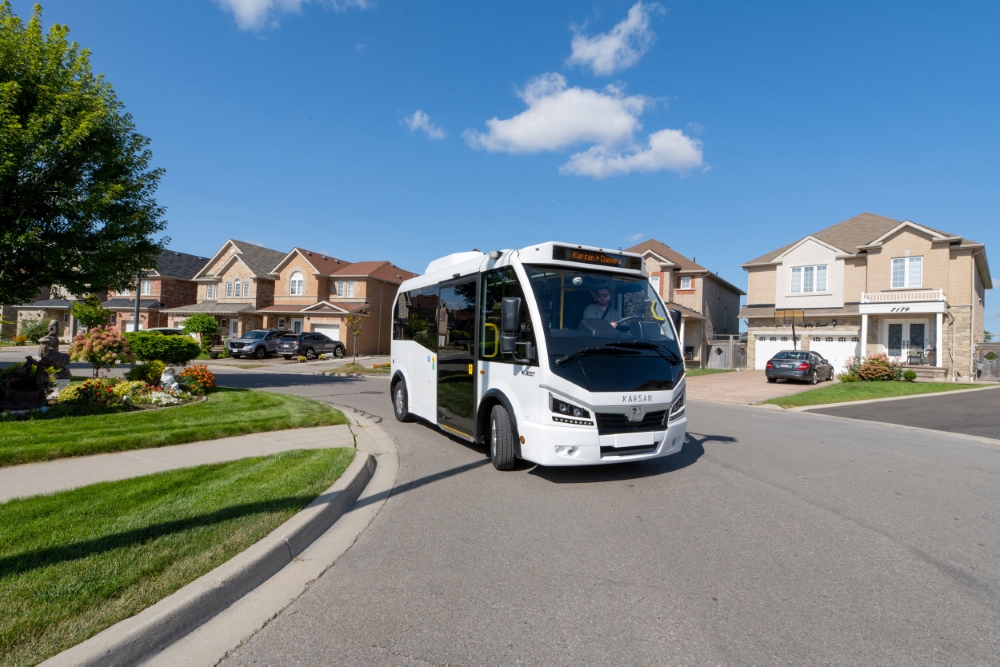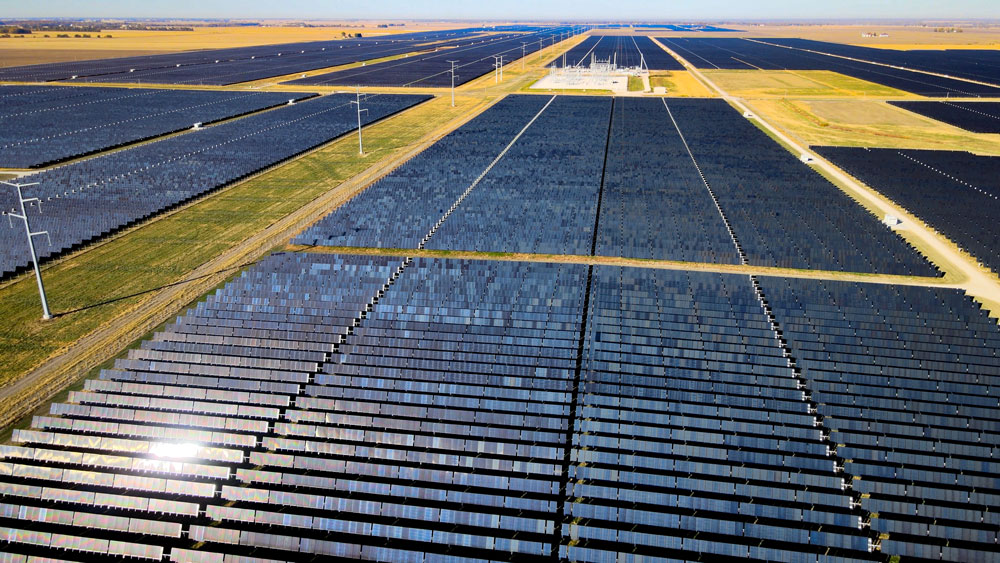Illinois Governor Pritzker JB Pritzker has committed to a state goal of 1 million electric vehicles on the road by 2030 and net-zero greenhouse gas emissions by 2050. The groundwork is in place to make both of those goals reality.
Since it went into effect on January 1, 2022, the Reimagining Energy and Vehicles in Illinois (REV Illinois) has backed two dozen incentive agreements across the state, from multiple investments by Rivian and its suppliers in Normal to Gotion’s battery plant in Manteno and bus companies and Damera in Channahon and Peoria County, respectively.
All told, those deals anticipate 4,388 new jobs created and 8,259 jobs retained, including 800 jobs at five locations in the state operated by Wieland North America and its affiliates, and 570 jobs maintained by Smalley Steel Ring Co. and The Greenhill Co. in Lake Zurich.
EV Update
April 2025 saw the grand opening of TCCI Manufacturing’s $45 million Clean Energy Innovation Hub in Decatur. The project was first in line among the 24 REV Illinois agreements. In addition to a new compressor line, the multifaceted project includes two partnerships with Richland Community College (see Workforce elsewhere in this publication).
“The Clean Energy Innovation Hub represents the kind of bold, future-focused investment that will define the next era of American manufacturing,” said Mark Denzler, president and CEO of the Illinois Manufacturers’ Association. “By onshoring critical EV component production and launching a dedicated workforce academy, TCCI and its partners are not only reinforcing Illinois’ leadership in clean energy — they’re setting a national standard for how industry, education and government can come together to drive innovation, sustainability and economic growth.”
Perhaps no project in the Illinois EV and battery ecosystem has received more attention in the past year than the $2 billion, 2,600-job battery factory coming to tiny Manteno Village in Kankakee County from manufacturer Gotion, which is renovating an abandoned Kmart warehouse. “Once the plant is open and operating, Gotion will be paying real estate taxes up to $2 million a year for the next 30 years — which is double what the empty property contributes now,” says a county summary of the project.
The Manteno facility, another project in the REV Illinois portfolio, is moving forward on pace, say Kankakee County Economic Development President and CEO Tim Nugent and Business Development Vice President Angela Morrey.
Gotion as of July 2025 had posted 42 jobs in Manteno, including a module & pack line controls engineer position with a pay range of $80,000 to $150,000 requiring at least an undergraduate engineering degree and two years in a manufacturing environment. Nugent says the payroll is at around 300, with more jobs arriving all the time.
“They are always doing job fairs, and hiring strategically,” he says.
“This is a different manufacturing facility than what a lot of us would perceive,” says Nugent, noting the cleanliness and prevalence of the color white in the 1.5-million-sq.-ft. facility. “Walk in there now and it reminds me of a lab.” The Kmart facility had more than 100 garage door bays. Many of those have been converted to windows to welcome more natural light inside.
Before full-scale EV battery production comes online, the factory’s first manufacturing line will likely make battery storage systems, the semi-trailer-sized facilities used for storing power at solar and wind farms and at data centers. Illinois has plenty of those to serve.
“Gotion has been meeting with data center people to supply some of these ESS systems to get them up and going until the utility can provide more power to them,” Nugent says. “It wasn’t top of mind before. The power companies are so stretched. Once the utility does get the power to them in a few years, they can use these systems as backups or sell them … Some of the data centers have been able to increase their speed to market because they can get some supplemental power they didn’t have before.”
State funds have contributed to the setup of training programs for Gotion with Kankakee Community College. Morrey says the college “has been really instrumental with Gotion” as part of the institution’s overall focus on skills for renewable energy and assembly. Gotion also is working with Olivet Nazarene University as well as such schools as Bradley University, University of Chicago and Governors State University in state, in addition to nearby heavy hitters Notre Dame and Purdue.
“Everybody in the region is very familiar with the Gotion factory and wants to get involved,” says Nugent. “Once the facility is up and going, they potentially will have classes in the facility. Manufacturing will be so far advanced from what manufacturing has been.”

Gotion will build a $2 billion plant in Manteno, Illinois.
Photo by Joe Hendrickson: Getty Images
SAF: The Next Frontier
Projects on the drawing board from the liquid fuel sector could drive an entirely different clean energy industry and supply base: sustainable aviation fuel (SAF) and the farms that supply its raw material. While there currently are no operating SAF facilities in the state, three have received REV Illinois agreements to help them reach production: (Avina, Crysalis, and Monarch Energy)
“Our facility will take advantage of existing rail and pipeline infrastructure for efficient delivery of ASTM-certified fuel to Chicago O’Hare and other major airports around the Midwest region,” said Avina Clean Hydrogen Founder and CEO Vishal Shah when the project was announced in December 2024.
“If the proposed SAF projects come to fruition, they may provide a significant new market opportunity for Illinois corn and soybeans used as feedstock,” says Illinois Farm Bureau Assistant Director of Energy Noelle Neef.
Illinois in the meantime has already prepared the soil. The state Illinois was the first in the nation to implement a SAF tax incentive, providing a $1.50/gallon tax credit for SAF sold to or used by an air carrier. When the Federal Aviation Administration announced nearly $300 million for SAF projects across the country. Illinois-based projects at the University of Illinois Urbana-Champaign, Marquis Energy and Buckeye Terminals were selected, as was Chicago-based LanzaJet’s SAF plant in Georgia.
At the state’s inaugural two-day SAF Conference in 2024, Illinois Governor JB Pritzker said, “As a leader in biomanufacturing and aviation, Illinois is well-suited to lead the charge on sustainable aviation fuel adoption and manufacturing. The shift to SAF will no doubt play an important role in Illinois’ long-term climate goals, all while promoting innovation and creating jobs for our state.”

Canada’s Damera Corp., the exclusive North American distributor of the Karsan eJEST zero-emission minibus (ZEB), has leased a facility in Greater Peoria to sell and service the eJEST and to establish its first U.S. electric transit bus assembly plant to deploy additional models. Company officials first met Illinois DCEO and Illinois Economic Development Corp. officials at SelectUSA in 2024.
Photo courtesy of Damera
Check the Dashboard
As those SAF plants come online, they will add revenue to some $88 million in land lease payments that clean power projects are paying to farmers, ranchers and other private landowners, according to the American Clean Power Association, which has tracked $23 billion worth of wind, solar and energy storage projects in the state that pay more than $98 million in state, local and property taxes annually. The state is No. 6 in the nation in clean power capacity (No. 5 in wind alone) at 11,407 MW and the clean power sector employs 44,999 people, says the ACPA.
SAF would also align as another opportunity for farmers alongside the $10.8 billion worth of corn produced in the state annually to make ethanol at one of the 13 ethanol plants in Illinois, which together account for 25% of national ethanol production.
Up-to-date information on all aspects of the clean energy scene can be found at the Illinois Clean Energy Dashboard, found at cleanenergy.illinois.gov. That dashboard, operated by the Illinois Power Agency (IPA), in August found that solar power in the state totaled 6,187 MW by the end of Q1 2025 with over 120,000 projects, helped in part by IPA initiatives such as Illinois Shines and Illinois Solar For All.
“Due to the Future Energy Jobs Act (2017) and the Climate and Equitable Jobs Act (2021), the state experienced a significant increase in the rate of new solar project development,” says the IPA. “Prior to 2017, Illinois featured only about 80 MW of solar projects operating in the state.”
In March, the Solar Energy Industry Association (SEIA) announced that Illinois is No. 4 in the nation for solar energy capacity. “In 2024, about 2.5 gigawatts of capacity were installed in the state, which is about half of all the previously installed solar energy equipment,” the SEIA stated, crediting the same legislation cited by the IPA.
Signs of win-win benefits of solar can be found in the same central Illinois region being boosted by Rivian and others. In late July the Springfield Sangamon Growth Alliance (SSGA) announced a 20-year Community Benefit Agreement (CBA) with Swift Current Energy, developer of the Double Black Diamond solar installation, that includes a $5 million commitment over the next two decades to support community priorities.
Double Black Diamond, which will provide clean power equivalent to the annual needs of 100,000 homes, employed 500 during construction and will be paying $100 million in property taxes over the life of the project to Sangamon and Morgan counties.
The City of Chicago is sourcing around 70% of the power that is used for its facilities — including O’Hare and Midway airports — from Swift Current’s Double Black Diamond Solar project. “Additionally, Cook County, CVS Health, Loyola University Chicago, PPG, State Farm and TransUnion are sourcing power from the project via Constellation NewEnergy, Inc.,” according to a release.
“Double Black Diamond is more than a solar project. It is a bold example of what’s possible when government, economic developers and communities work together toward shared goals,” said SSGA CEO Ryan McCrady.

